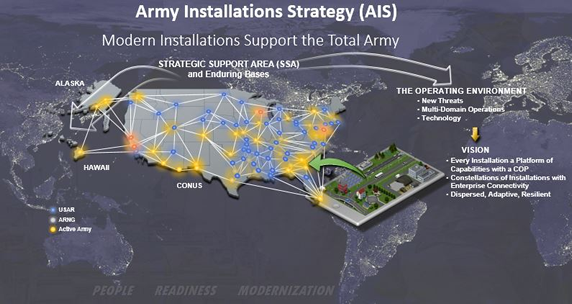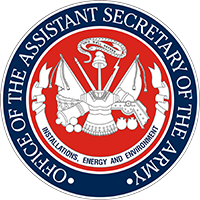Strategic Integration

U.S. Army releases new Installations Strategy
The Army recently released its new Installations Strategy, which will guide future decision-making processes as Army installations transform into platforms that support multi-domain operations. The strategy identifies the need for modernized, resilient and sustainable installations and outlines how every installation will be a "smart" platform of capabilities, utilizing connected sensors to enhance operational capacity and improve the delivery of services.
"Installations are the platforms from which the Army builds culture, trains and projects power, "said the Honorable Alex A. Beehler, assistant secretary of the Army for Installations, Energy and Environment. "The AIS addresses a range of emerging requirements related to MDO and the Army People and Modernization Strategies, and will protect installations from new and emerging threats as we adopt the 'smart cities' technologies increasingly prevalent across the country."
Responsibilities
Strategic Integration is responsible for providing strategic direction for the resource planning and allocation process for Army installations (~$17 Billion annually), developing strategies and planning for installation modernization, and integrating with broader Army strategic planning efforts, all of which allow the Assistant Secretary of the Army (Installations, Energy and Environment [ASA (IE&E)] to carry out Title 10 responsibilities for the Secretary of the Army.
Army Directive 2020-11, Roles and Responsibilities for Installation Operations


